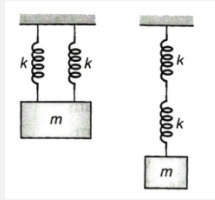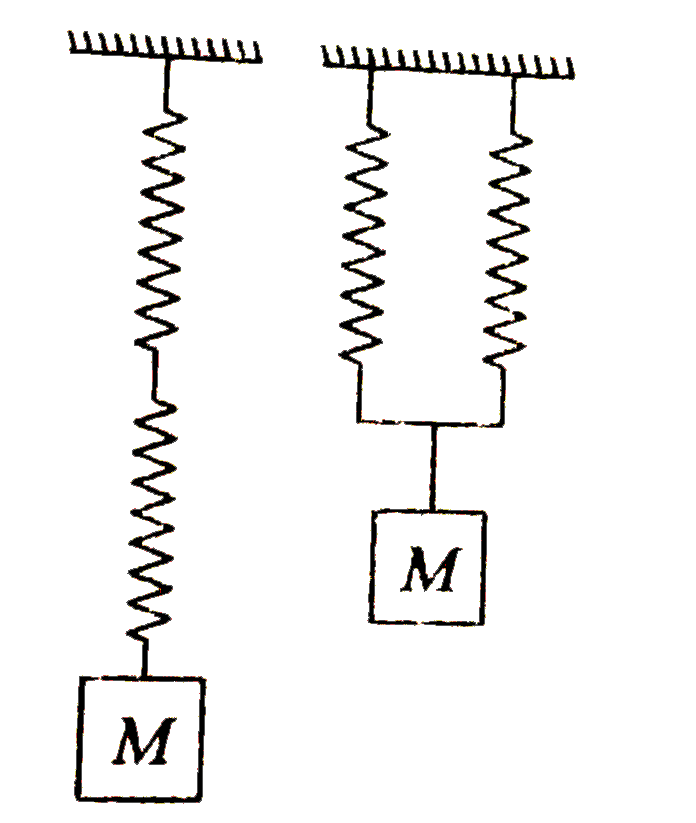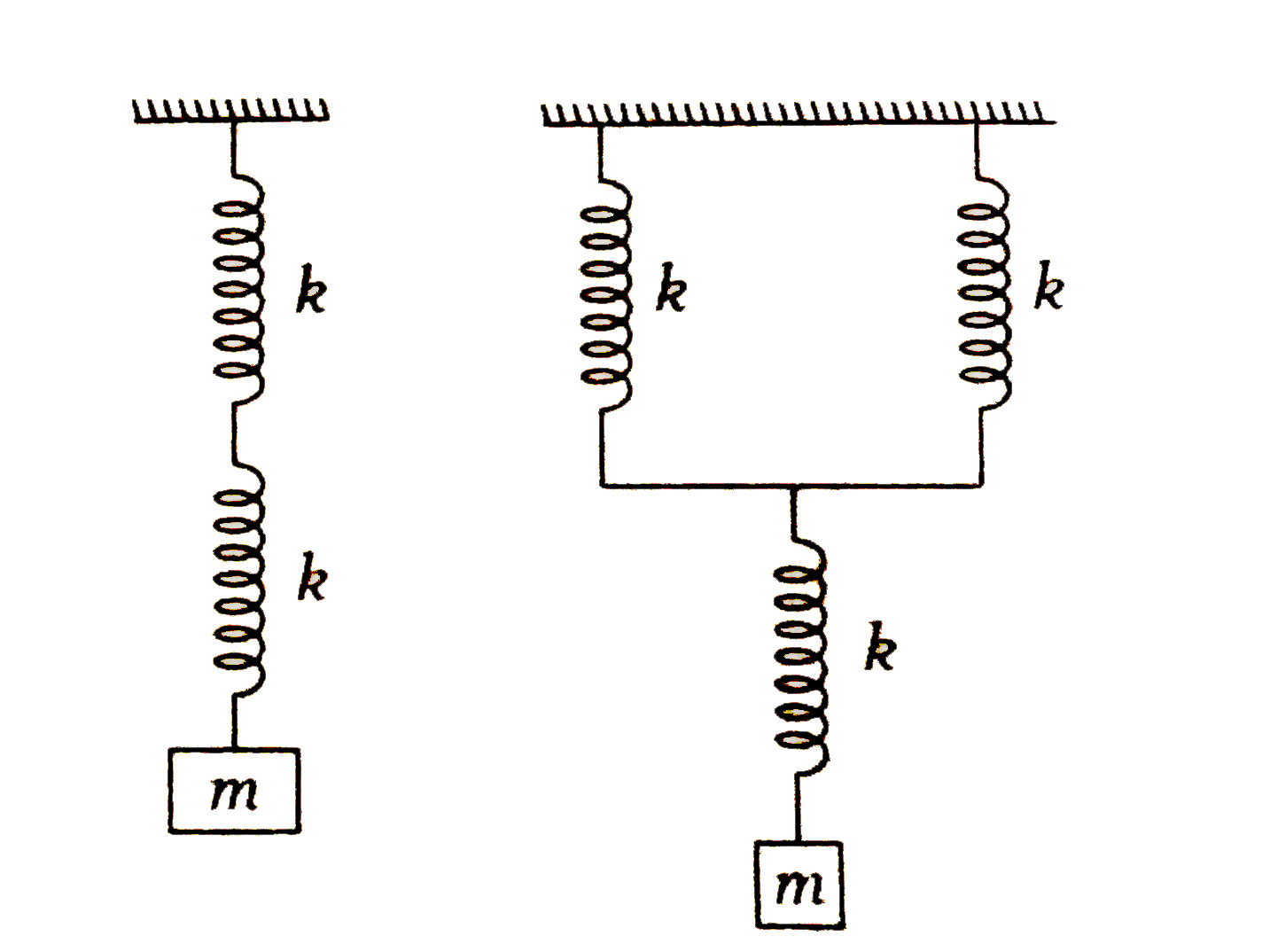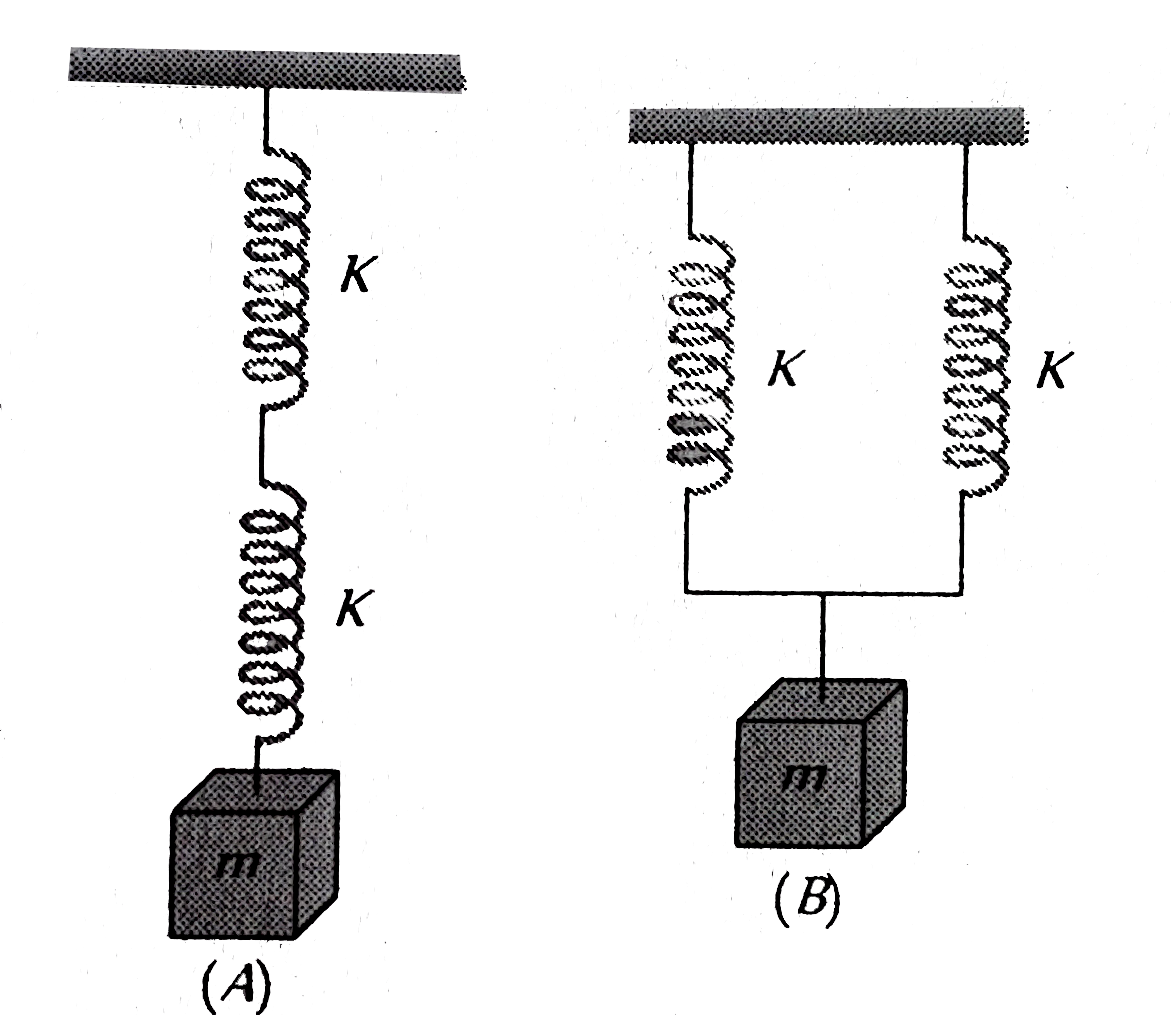Two identical springs are connected in series and parallel as shown in figure. If fs and fp are frequencies of series and parallel arrangements, what is fsfp ?
1:2
2:1
1:3
3:1
The correct Answer is:A
Similar Questions
Two identical springs are connected in series and parallel as shown in the figure . If fsandfp are frequencies of arrangements, what is fsfp ?

View SolutionTwo identical springs are connected in parallel and series as shown in the figure. If fpandfs are frequencies of arrangements , what is fsfp ?
View Solution
Knowledge Check
Two identical springs of spring constant k each are connected in series and parallel as shown in figure. A mass M is suspended from them. The ratio of their frequencies of vertical oscillation will be
 A1:2B2:1C4:1D1:4
A1:2B2:1C4:1D1:4Two identical capacitors are first connected in series and then in parallel. The ratio of equivalent capacitance is
A1:1B1:2C1:3D1:4Some springs are combined in series and parallel arrangement as shown in the figure and a mass m is suspended from them. The ratio of their frequencies will be
 A1:1B2:1C√3:2D4:1
A1:1B2:1C√3:2D4:1
Two identical spring of constant K are connected in series and parallel as shown in figure. A mass mis suspended from them. The ratio of their frequencies of vertical oscillations will be

View SolutionTwo identical spring of constant K are connected in series and parallel as shown in figure. A mass is suspended from them. The ratio of their frequencies of vertical oscillations will be

View SolutionTwo identical springs of spring constant k each are connected in series and parallel as shown in figure. A mass M is suspended from them. The ratio of their frequencies of vertical oscillation will be

View SolutionTwo identical capacitors are first connected in series and then in parallel. The ratio of equivalent capacitance is
View SolutionSome springs are combined in series and parallel arrangement as shown in the figure and a mass m is suspended from them. The ratio of their frequencies will be

View Solution
